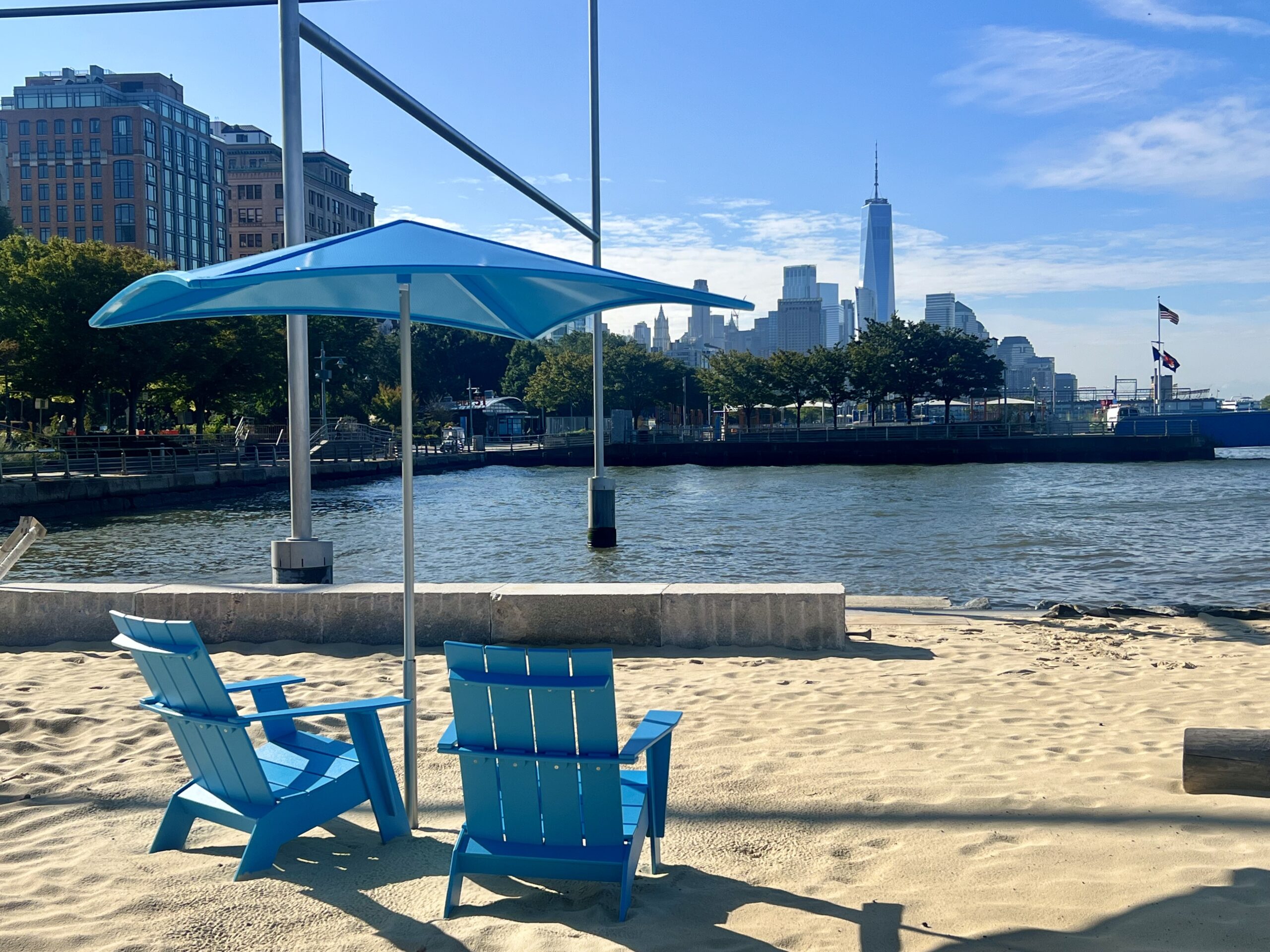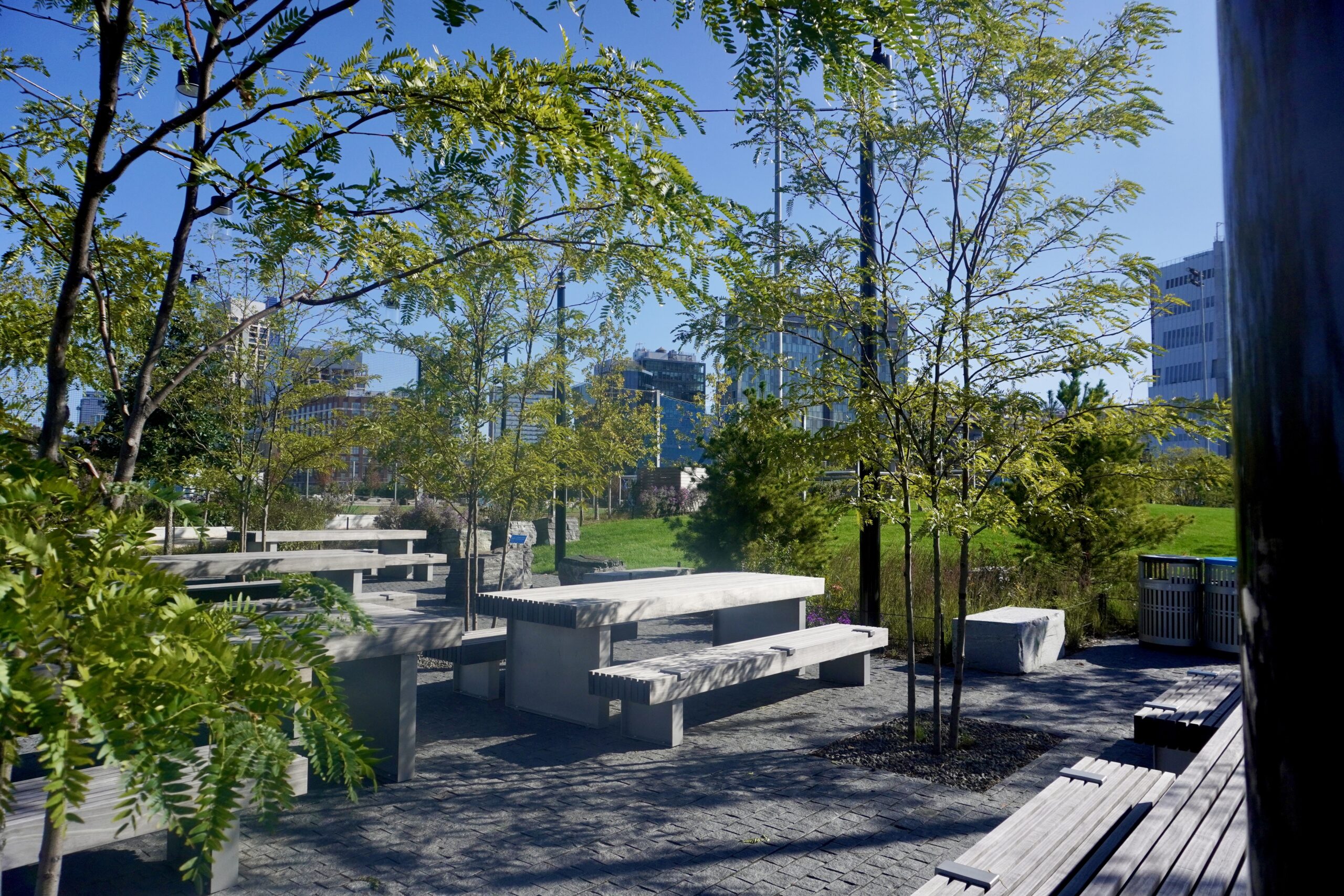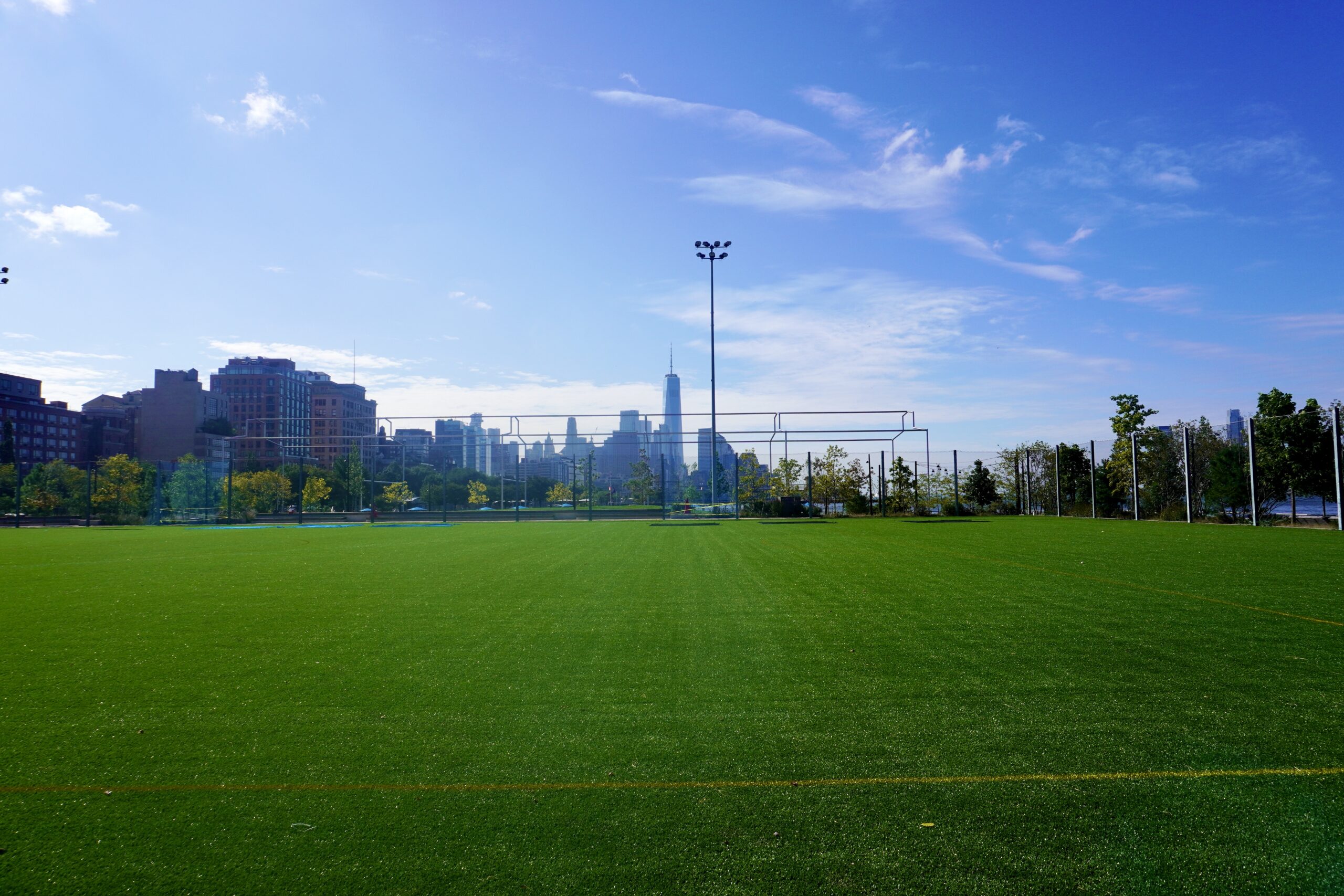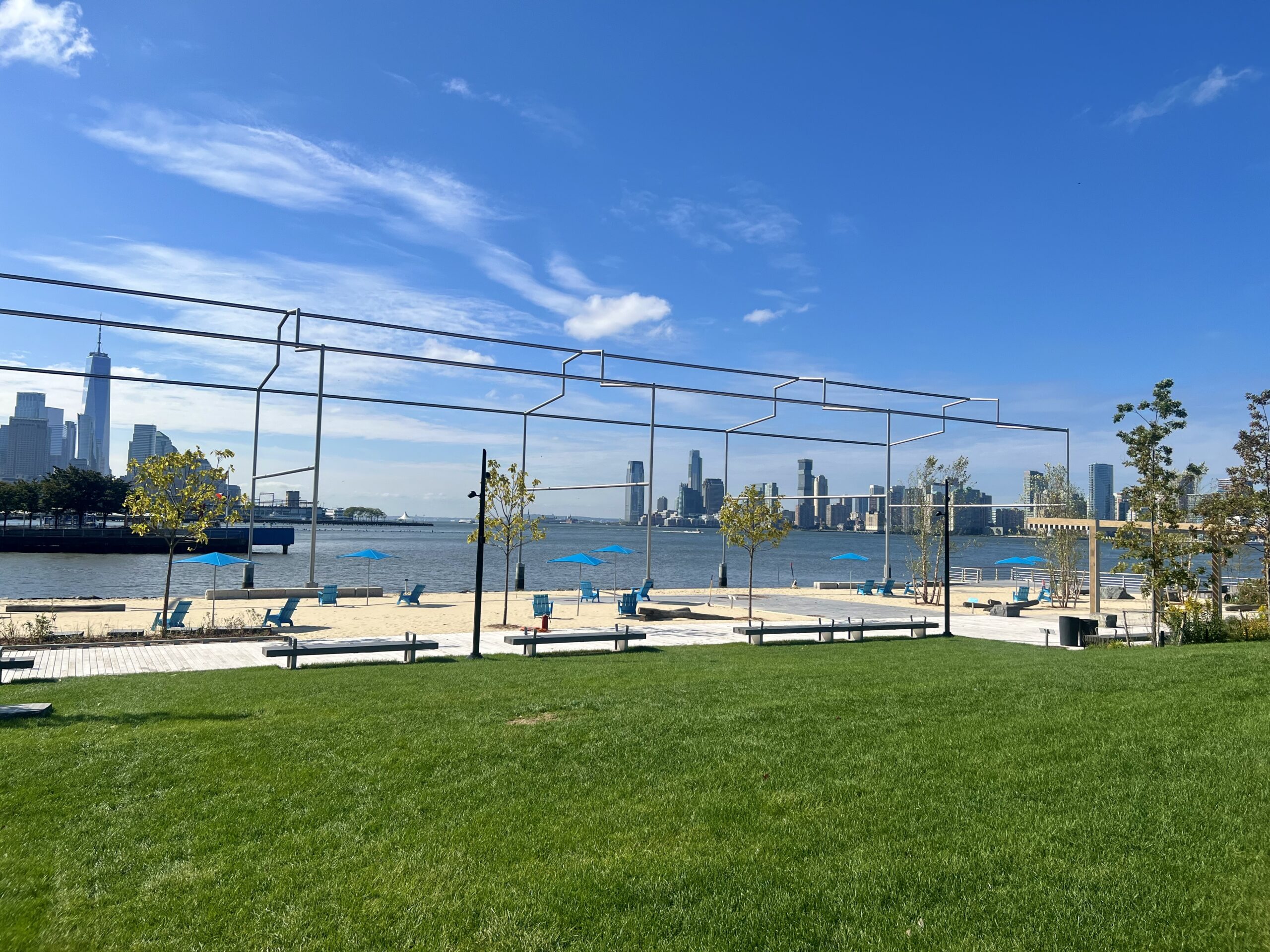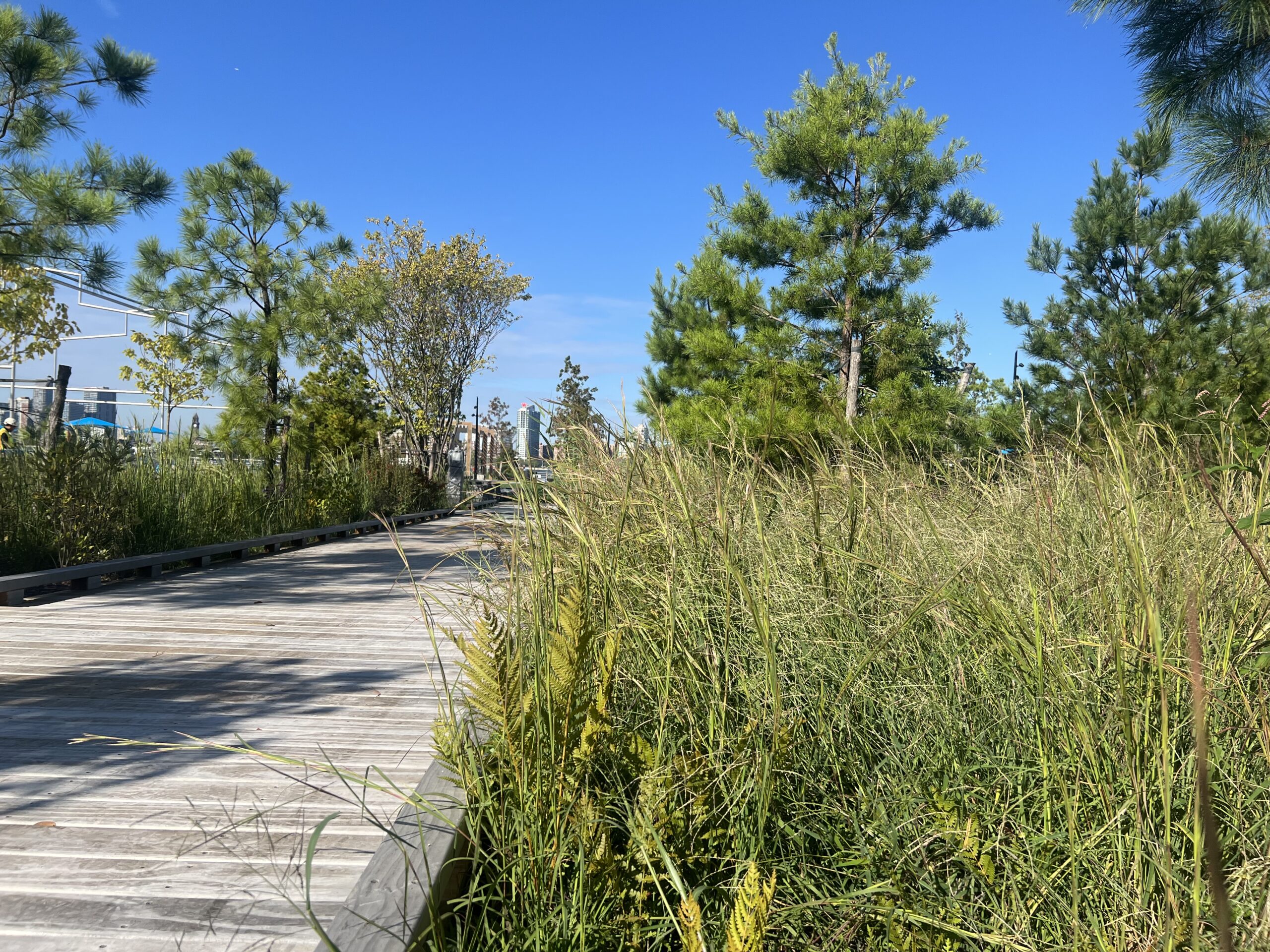Located in Hudson River Park between Gansevoort Street and Little West 12th Street, and opposite the Whitney Museum of American Art, Gansevoort Peninsula delivers a wide array of spaces for lounging, fitness and fun.
Built on solid ground (as opposed to a pier), visitors will find a resilient southern edge that provides direct access to the Hudson River for non-motorized boats and stunning views of the River, the lower Manhattan skyline and Day’s End, a monumental, site-specific sculpture by David Hammons donated to the Park by the Whitney Museum of American Art in 2021. Swimming is not permitted.
Places to Lounge & Stroll
The adjacent beach features 1,200 tons of sand with beach umbrellas, Adirondack-style chairs and a misting feature for cooling down or rinsing off sand. A large picnic area with tables and benches overlooks the River, and a boardwalk with a Pine Grove draws people onto the site from the adjacent esplanade before connecting with the western esplanade where Manhattan’s Thirteenth Avenue was once located. And for your four-legged friends, the dog park features spaces for large dogs and small dogs to run, along with a dedicated training area.
Salt Marsh
On the north side of Gansevoort Peninsula is a salt marsh, the first of its kind on the Manhattan side of the Hudson River. Native grasses and plantings, coupled with submerged reef balls and oyster gabions seeded with 20 million juvenile oysters, provide valuable habitat, improve resiliency and serve as an educational touchpoint for the public to learn about the environmental benefits of intertidal ecosystems.
These features create greater habitat diversity for the organisms that live in the Park’s 400-acre Hudson River Park’s Estuarine Sanctuary.
Day’s End
On the southern edge of the Peninsula, an important public art installation entitled Day’s End, by artist David Hammons, is now on view. Day’s End derives its inspiration and name from Gordon Matta-Clark’s 1975 artwork once located in the same location, and was donated to Hudson River Park by the Whitney Museum of American Art. More information and public review documents are available.
History
Did you know: Manhattan once had a well-used Thirteenth Avenue? It ran from Bloomfield Street on what is now the Gansevoort Peninsula north to 23 Street. The area was later excavated to permit longer ships to dock without blocking the navigation channel. Today, only a one-block stretch of Thirteenth Avenue remains on the Gansevoort Peninsula. This block has been incorporated into the design for the Gansevoort Peninsula.
Community-Informed Design
The design for Gansevoort Peninsula was informed by extensive community engagement. Beginning in March 2019, the Trust and Field Operations, in partnership with Community Board 2 and the Park’s Advisory Council, organized well-attended public meetings and a design charrette to solicit and incorporate feedback from the community. These sessions played an important role in selecting the various features and amenities on Gansevoort Peninsula, ultimately achieving a balance between active recreation, environmental features and spaces for relaxing and lounging. Learn more about the public process and design for the largest active and passive recreation space in Hudson River Park.
